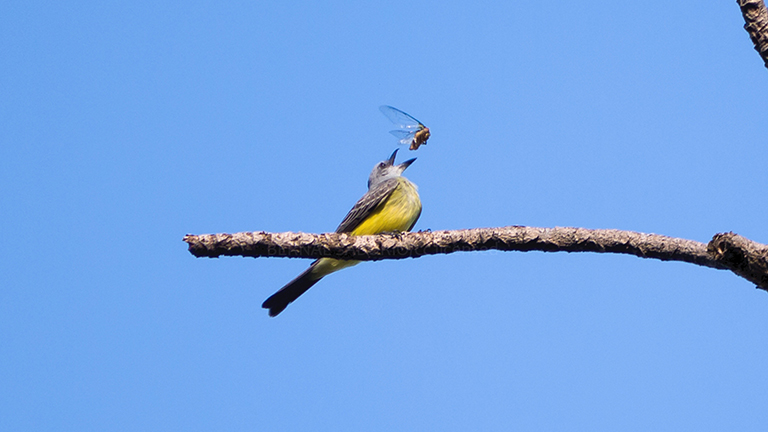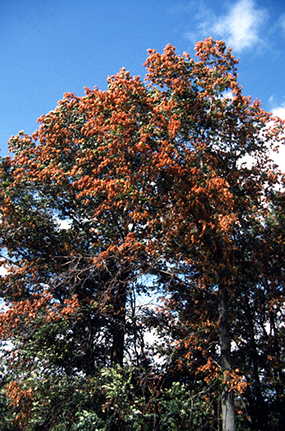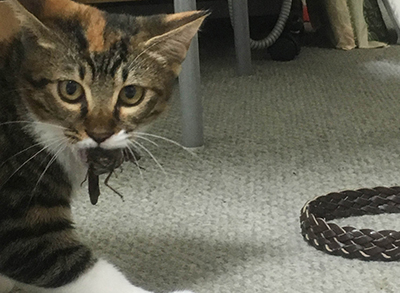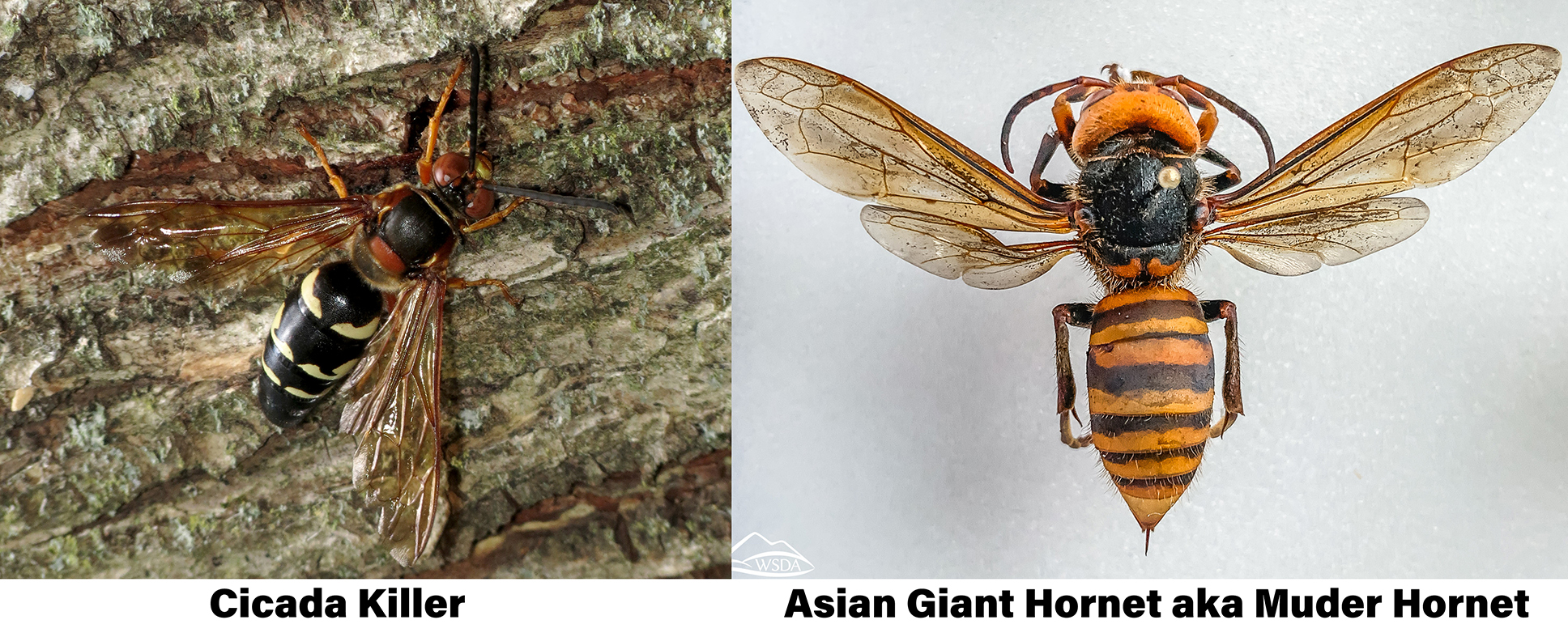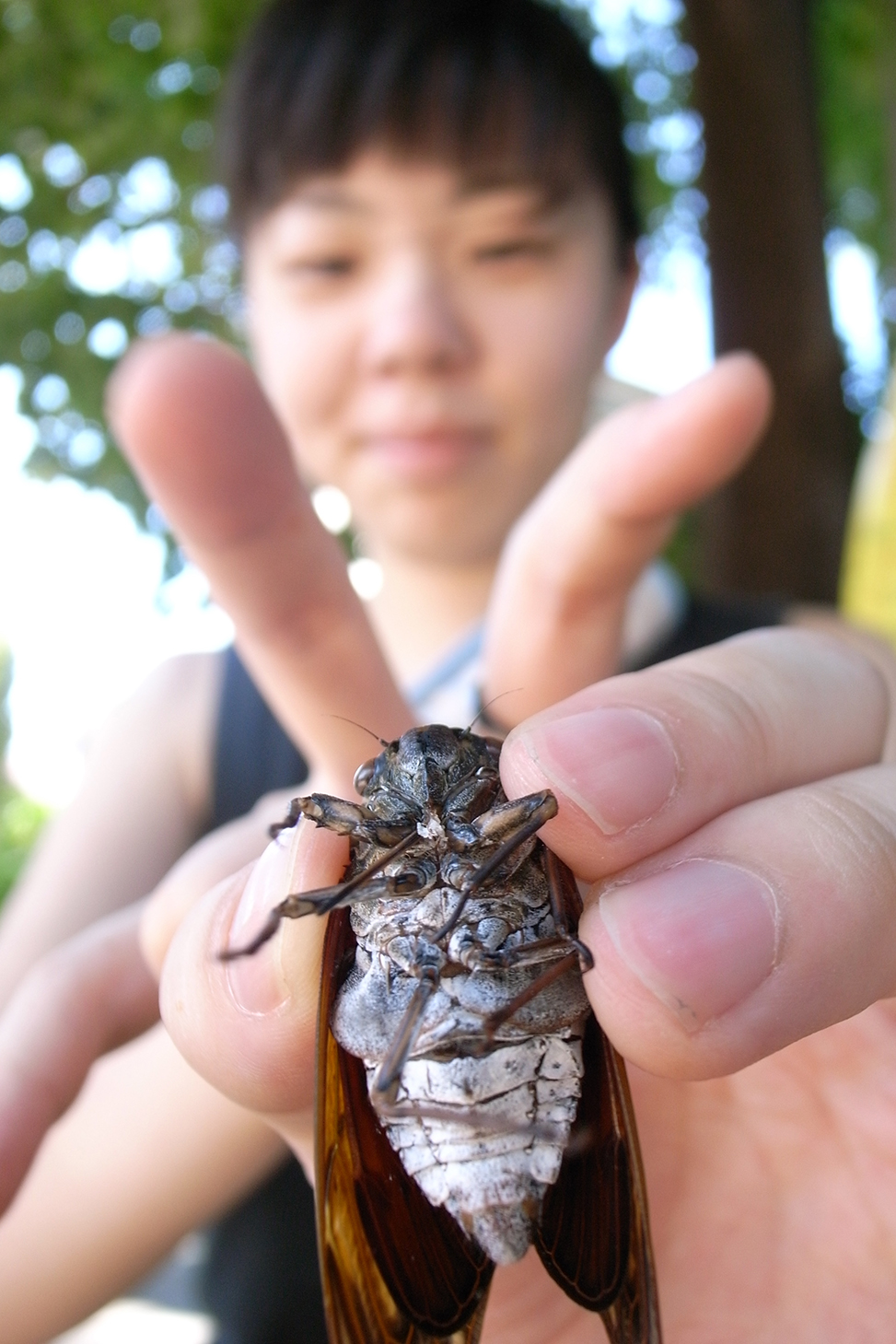KEY CICADA FACTS
- Cicadas won’t hurt you or your pets. But if you’re concerned, consult a doctor or a vet.
- Cicadas aren’t a “Plague of Locusts.” In some areas people call cicadas locusts, but cicadas can’t eat crops like locusts. They only drink trees.
- Most trees will be fine. Smaller trees are more vulnerable, but they can be easily protected with netting.
- If you don’t like bugs, don’t worry. It’ll be over in a month and a half.
- If you do like bugs, get out there and enjoy it! They’ll be gone in a month and a half!
What’s happening?
When the irises begin to bloom, expect up to 1.5 million cicadas per acre to begin boiling out of the ground. This spring Indiana will see the emergence of the 17-year cicadas (Brood X). Once every 17 years they emerge en masse, climb up trees, sing (though it sounds more like screaming), mate, and lay their eggs on the tips of tree branches.
Where is it happening?
17-year cicadas can be found throughout Indiana but the biggest populations will be in southern Indiana. According to Cicada Mania, these cicadas were reported to be more abundant in the following areas during their last emergence in 2004: “Bloomington, Brookville, Clinton Falls, Dillsboro, Fishers, French Lick, Indianapolis, Lawrenceburg, Lexington, Martinsville, McCormick’s Creek State Park, Nashville, North Vernon, Skiles Test Park, Spencer."
Cicadas need to feed on trees nearly constantly for most of their lives. They are therefore typically only found in areas that had trees 17 years ago and have continued to have trees since then. For example, an area that was forest 17 years ago but was cleared for farmland 10 years ago will not have a cicada emergence because the cicadas had no tree roots to feed on for the past 7 years. An area that was farmland 17 years ago and was recently planted with trees will also not have a cicada emergence because there were no trees available 17 years ago for cicadas to lay their eggs. However, a forested area or a city park that has had trees constantly for the last 17 years has a high chance of having a cicada emergence this spring.
How do I identify a cicada?
The first signs of cicadas are often their shells (exuvia). When cicada nymphs come up out of the ground, they climb up the nearest tree or other tall surface, and shed their shells. These shells are perfect copies of the nymphal cicadas. You can even sometimes find little white strands coming out of the shells. These are their lungs (tracheal tubes)! Insect’s respiratory system is made out of tubes and little holes (spiracles) in the outside of their body. When they shed their skin, they shed the whole thing, respiratory system and all!

Cicadas are often confused with other plant-feeding insects (e.g. crickets, grasshoppers, katydids, spotted lanternfly, etc.). Adult cicadas tend to have sturdy, thick bodies with mostly clear wings that are longer than their bodies. There are three main species of 17-year cicada in Indiana and about 16 species of annual and 13-year cicadas. You can find a full list here. 17-year cicadas are distinctive from annual cicadas in that their bodies are a dark, nearly black brown with amber highlights on their wing veins, and red eyes. You can see a comparison of 17-year cicadas and their look-a-likes.
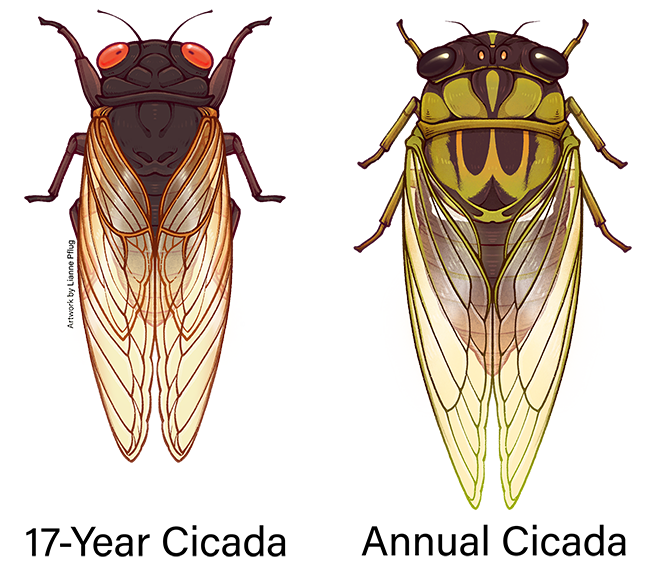
Cicadas songs are distinctive as well. Check out this video to see the full life cycle and hear what a chorus of cicadas sounds like!
Why do cicadas spend 17 years underground?
The short answer? So that less of them get eaten! Most scientists agree that the most likely reason why 17-year cicadas spend so long underground is to avoid predators. By coming to the surface in such a large group, some cicadas get eaten but many cicadas will survive. Predators just don’t have enough room in their stomachs for all of the cicadas that pop up! Birds, bears, fish, raccoons, and every other animal that can eat insects will stuff themselves on this cicada feast. The second reason why cicadas spend so long underground is that many insect populations are largely regulated by highly specialized predators (for example, parasitic wasps). These predators are closely adapted to the insects they attack. By only emerging every 17 years, it is much harder for predators to specialize on 17-year cicadas because they are such an infrequent and unpredictable resource (at least to a predator!).
Tree health
Homeowners only need to worry if they have newly planted trees (3-4 years old). The best way to protect these young trees is to cover them in a mesh fabric for the ~1 month period when the cicadas are active in the area. The mesh bags can be made from a variety of materials as long as the holes are no larger than 1/2 inch. Drape the fabric over all the twigs and branches that are smaller than 3/8 inches and secure it at the bottom so that cicadas cannot climb up from underneath. The goal is to prevent the cicadas from having access to the branches so that they will lay their eggs elsewhere.
Larger trees do not need to be protected from cicadas. They may experience minor dieback at the tips of branches, but this will not harm the overall health of the tree. If you find these dead twigs unsightly, you can either trim them off or hire an arborist to remove them. You can learn more here.
Although the bagging method works best in most situations, fruit growers and nurseries may need to take additional precautions. You can find more details here.
Netting can be purchased online or local hardware stores, garden centers, or big box stores (Walmart, Home Depot, Lowes, etc.). Look for products with the words "Insect Netting". These tend to have a mesh size much smaller than the 1/2 inch minimum requirements. Products marketed as bird netting tend to have mesh sizes of 5/8 inch or greater and are too coarse to keep female cicadas from reaching twigs, laying their eggs, and injuring your trees.
Human and animal health
Cicadas are largely harmless to humans and animals. They don’t bite and they don’t sting. They lack the physical structures to hurt people that other insects have: they don’t have stingers so they can’t sting and their mouth parts are a more like a straw than teeth so they can’t bite. The worst that most cicadas will do to a person is startle them.
It’s also very unlikely that cicadas will harm your pets. Cicadas themselves aren’t poisonous and can't sting or bite. However, the material their exoskeleton is made of is difficult for some animals to digest and may upset their stomach. If you are concerned about your pet, we strongly recommend consulting with your veterinarian.
Cicada killers
Cicada killers are a native species that serve an important function in Indiana’s ecosystem. Cicada killers are large hornets. They’re about 2 inches long and have black and yellow striped bodies with transparent yellow wings. Learn more about cicada killers here.
Cicada killers are not aggressive but they can sting. Generally, if you leave them and their nests be, they won’t attack you. If you are stung by a cicada killer, follow standard first aid practices for dealing with hornet stings.
Unfortunately, cicada killers are sometimes confused with murder hornets (Asian giant hornets). Murder hornets are an invasive species that was recently accidentally introduced into the North West and is not currently found in Indiana. If you think you’ve found a murder hornet or any other invasive species, please report it.
Cicada Activities
There are lots of great ways to have fun with the cicada emergence! Here are a few of our favorite ideas:
Cicada Watching
Looking for more reasons to get outside and enjoy the cicada emergence? Join us for Indiana Cicada Fest, May 1st-9th! On these days, pick a spot with cicadas, photograph as many plants or animals as you can find, and add them to our Cicada Fest Project! All you need to do is:
- 1. Join iNaturalist
- 2. Join our iNaturalist project
- 3. Pick your favorite spot to go outdoors (e.g. parks, forests, your backyard, anywhere you enjoy being outdoors!)
- 4. Head outside during the week of May 1st-9th and look for any interesting plants, animals, fungi, and hopefully some cicadas!
- 5. Snap a picture and upload your observation to iNaturalist
We’ll be sharing some of our favorite observations on the Purdue Entomology social media accounts (Facebook and Twitter)!
Cookies
Why not celebrate the cicadas and express your artistic side with a sweet treat! We’ll have a video at Virtual Bug Bowl on how to make your own sugar cookies with cicada designs. You can use this image to guide your frosting drawing.. We’ll share some of our favorites on social media (Purdue Entomology Facebook and Twitter). Tag us and use the hash tag #CicadaCookies.
Make a friend
Ever wanted to make a cicada friend? Male cicadas follow the sound of wing clicks from female cicadas. Snapping your fingers sounds enough like these clicks to fool a male cicada. All you need to do is find a cicada making a buzzing noise (only the males make that sound) and snap your fingers where you want it to go. You can lead them up and down a branch or even get them to fly onto your shoulder. If they don’t start walking towards your fingers right away, try snapping a few more times. Sometimes they don’t notice the first snap! Here's a helpful video showing this in action.
Jewelry and Art
Cicadas, like many insects, can be easily preserved and used in artwork. At the end of the cicada emergence, the cicadas will die and drop to the ground. You can easily pick them up off the sidewalk or from under a tree to use in your art project. You can learn about preserving insects here. Once your cicada is preserved, you can use it in all kinds of decorative ways!
You can also make your own cicada origami. There are lots of different patterns online. You can try this one which can be made using any type of square paper and this one that already has a cicada pattern that you can print out! We’ll show you how to make both versions in our cicada origami video during Virtual Bug Bowl!
Resources
- Cicada Activity for Kids
- Cicadas and Their Look-A-Likes poster
- Article: 17-year cicadas are coming: Are you ready?
- Article: Plan ahead to protect young fruit trees from 17-year periodical cicadas emerging in May
- Cicada Email list
- Indiana Cicada Fest BioBlitz on May 1st-9th
- Plan ahead to protect young fruit trees from 17-year periodical cicadas emerging in May
- Spring Break for Cicadas – an Event NOT to be Missed
- Cicada Management Bulletin
- Bug Bowl Cicada Day on April 12th -All videos will be recorded and can be viewed later!
- Purdue Entomology cicada updates through Facebook and Twitter
- Cicada Emergence Video
